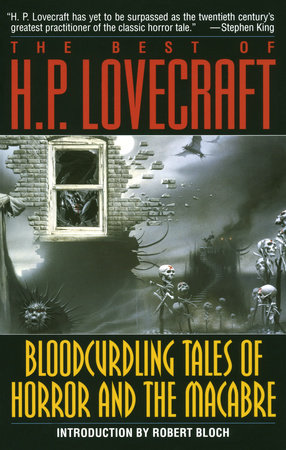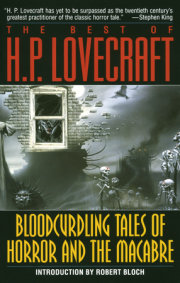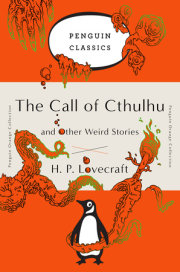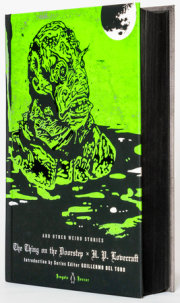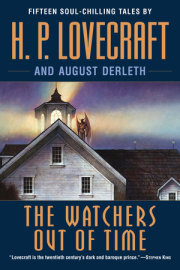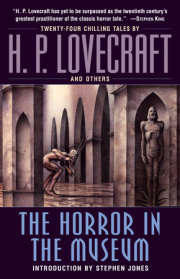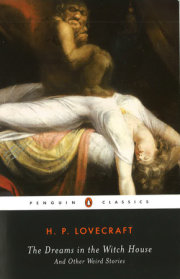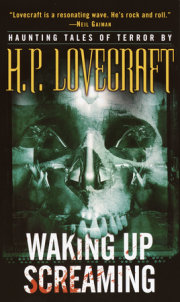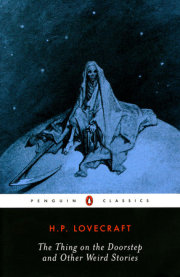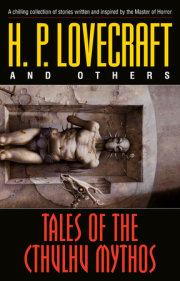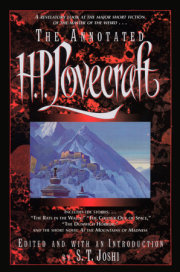The Rats In The Walls
On July 16, 1923, I moved into Exham Priory after the last workman had finished his labors. The restoration had been a stupendous task, for little had remained of the deserted pile but a shell-like ruin; yet because it had been the seat of my ancestors, I let no expense deter me. The place had not been inhabited since the reign of James the First, when a tragedy of intensely hideous, though largely unexplained, nature had struck down the master, five of his children, and several servants; and driven forth under a cloud of suspicion and terror the third son, my lineal progenitor and the only survivor of the abhorred line.
With this sole heir denounced as a murderer, the estate had reverted to the crown, nor had the accused man made any attempt to exculpate himself or regain his property. Shaken by some horror greater than that of conscience or the law, and expressing only a frantic wish to exclude the ancient edifice from his sight and memory, Walter de la Poer, eleventh Baron Exham, fled to Virginia and there founded the family which by the next century had become known as Delapore.
Exham Priory had remained untenanted, though later allotted to the estates of the Norrys family and much studied because of its peculiarly composite architecture; an architecture involving Gothic towers resting on a Saxon or Romanesque substructure, whose foundation in turn was of a still earlier order or blend of orders—Roman, and even Druidic or native Cymric, if legends speak truly. This foundation was a very singular thing, being merged on one side with the solid limestone of the precipice from whose brink the priory overlooked a desolate valley three miles west of the village of Anchester.
Architects and antiquarians loved to examine this strange relic of forgotten centuries, but the country folk hated it. They had hated it hundreds of years before, when my ancestors lived there, and they hated it now, with the moss and mould of abandonment on it. I had not been a day in Anchester before I knew I came of an accursed house. And this week workmen have blown up Exham Priory, and are busy obliterating the traces of its foundations.
The bare statistics of my ancestry I had always known, together with the fact that my first American forbear had come to the colonies under a strange cloud. Of details, however, I had been kept wholly ignorant through the policy of reticence always maintained by the Delapores. Unlike our planter neighbors, we seldom boasted of crusading ancestors or other mediaeval and Renaissance heroes; nor was any kind of tradition handed down except what may have been recorded in the sealed envelope left before the Civil War by every squire to his eldest son for posthumous opening. The glories we cherished were those achieved since the migration; the glories of a proud and honorable, if somewhat reserved and unsocial Virginia line.
During the war our fortunes were extinguished and our whole existence changed by the burning of Carfax, our home on the banks of the James. My grandfather, advanced in years, had perished in that incendiary outrage, and with him the envelope that had bound us all to the past. I can recall that fire today as I saw it then at the age of seven, with the Federal soldiers shouting, the women screaming, and the negroes howling and praying. My father was in the army, defending Richmond, and after many formalities my mother and I were passed through the lines to join him.
When the war ended we all moved north, whence my mother had come; and I grew to manhood, middle age, and ultimate wealth as a stolid Yankee. Neither my father nor I ever knew what our hereditary envelope had contained, and as I merged into the greyness of Massachusetts business life I lost all interest in the mysteries which evidently lurked far back in my family tree. Had I suspected their nature, how gladly I would have left Exham Priory to its moss, bats, and cobwebs!
My father died in 1904, but without any message to leave to me, or to my only child, Alfred, a motherless boy of ten. It was this boy who reversed the order of family information, for although I could give him only jesting conjectures about the past, he wrote me of some very interesting ancestral legends when the late war took him to England in 1917 as an aviation officer. Apparently the Delapores had a colorful and perhaps sinister history, for a friend of my son’s, Capt. Edward Norrys of the Royal Flying Corps, dwelt near the family seat at Anchester and related some peasant superstitions which few novelists could equal for wildness and incredibility. Norrys himself, of course, did not take them so seriously; but they amused my son and made good material for his letters to me. It was this legendry which definitely turned my attention to my transatlantic heritage, and made me resolve to purchase and restore the family seat which Norrys showed to Alfred in its picturesque desertion, and offered to get for him at a surprisingly reasonable figure, since his own uncle was the present owner.
I bought Exham Priory in 1918, but was almost immediately distracted from my plans of restoration by the return of my son as a maimed invalid. During the two years that he lived I thought of nothing but his care, having even placed my business under the direction of partners.
In 1921, as I found myself bereaved and aimless, a retired manufacturer no longer young, I resolved to divert my remaining years with my new possession. Visiting Anchester in December, I was entertained by Capt. Norrys, a plump, amiable young man who had thought much of my son, and secured his assistance in gathering plans and anecdotes to guide in the coming restoration. Exham Priory itself I saw without emotion, a jumble of tottering mediaeval ruins covered with lichens and honeycombed with rooks’ nests, perched perilously upon a precipice, and denuded of floors or other interior features save the stone walls of the separate towers.
As I gradually recovered the image of the edifice as it had been when my ancestors left it over three centuries before, I began to hire workmen for the reconstruction. In every case I was forced to go outside the immediate locality, for the Anchester villagers had an almost unbelievable fear and hatred of the place. This sentiment was so great that it was sometimes communicated to the outside laborers, causing numerous desertions; whilst its scope appeared to include both the priory and its ancient family.
My son had told me that he was somewhat avoided during his visits because he was a de la Poer, and now I found myself subtly ostracised for a like reason until I convinced the peasants how little I knew of my heritage. Even then they sullenly disliked me, so that I had to collect most of the village traditions through the mediation of Norrys. What the people could not forgive, perhaps, was that I had come to restore a symbol so abhorrent to them; for, rationally or not, they viewed Exham Priory as nothing less than a haunt of fiends and werewolves.
Piecing together the tales which Norrys collected for me, and supplementing them with the accounts of several savants who had studied the ruins, I deduced that Exham Priory stood on the site of a prehistoric temple; a Druidical or ante-Druidical thing which must have been contemporary with Stonehenge. That indescribable rites had been celebrated there, few doubted, and there were unpleasant tales of the transference of these rites into the Cybeleworship which the Romans had introduced.
Inscriptions still visible on the subcellar bore such unmistakable letters as “DIV . . . OPS . . . MAGNA. MAT . . .” signs of the Magna Mater whose dark worship was once vainly forbidden to Roman citizens. Anchester had been the camp of the third Augustan legion, as many remains attest, and it was said that the temple of Cybele was splendid and thronged with worshippers who performed nameless ceremonies at the bidding of a Phrygian priest. Tales added that the fall of the old religion did not end the orgies at the temple, but that the priests lived on in the new faith without real change. Likewise was it said that the rites did not vanish with the Roman power, and that certain among the Saxons added to what remained of the temple, and gave it the essential outline it subsequently preserved, making it the center of a cult feared through half the heptarchy. About 1000 A.D. the place is mentioned in a chronicle as being a substantial stone priory housing a strange and powerful monastic order and surrounded by extensive gardens which needed no walls to exclude a frightened populace. It was never destroyed by the Danes, though after the Norman Conquest it must have declined tremendously; since there was no impediment when Henry the Third granted the site to my ancestor, Gilbert de la Poer, First Baron Exham, in 1261.
Of my family before this date there is no evil report, but something strange must have happened then. In one chronicle there is a reference to a de la Poer as “cursed of God” in 1307, whilst village legendry had nothing but evil and frantic fear to tell of the castle that went up on the foundations of the old temple and priory. The fireside tales were of the most grisly description, all the ghastlier because of their frightened reticence and cloudy evasiveness. They represented my ancestors as a race of hereditary daemons beside whom Gilles de Retz and the Marquis de Sade would seem the veriest tyros, and hinted whisperingly at their responsibility for the occasional disappearances of villagers through several generations.
Copyright © 2002 by H. P. Lovecraft. All rights reserved. No part of this excerpt may be reproduced or reprinted without permission in writing from the publisher.

